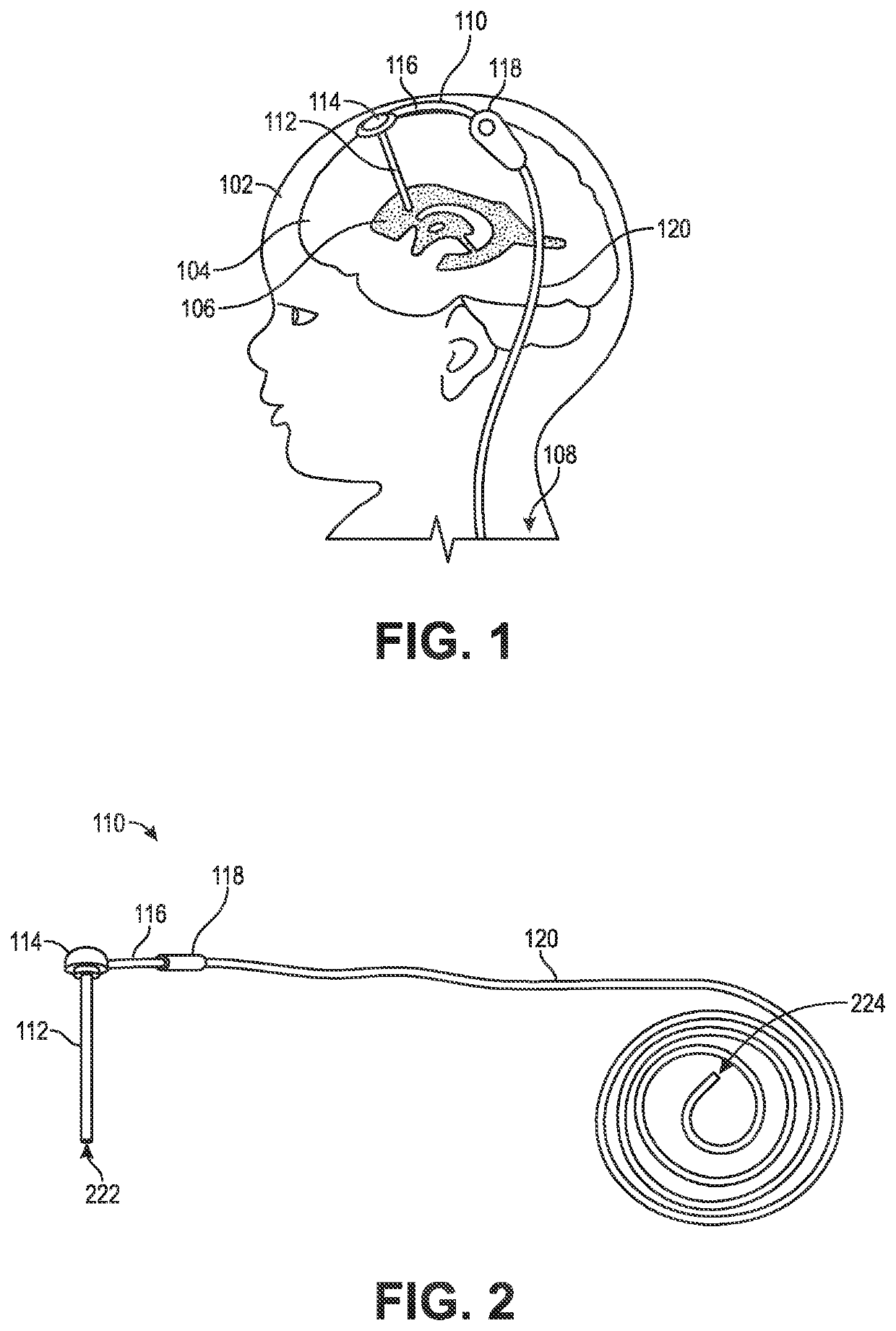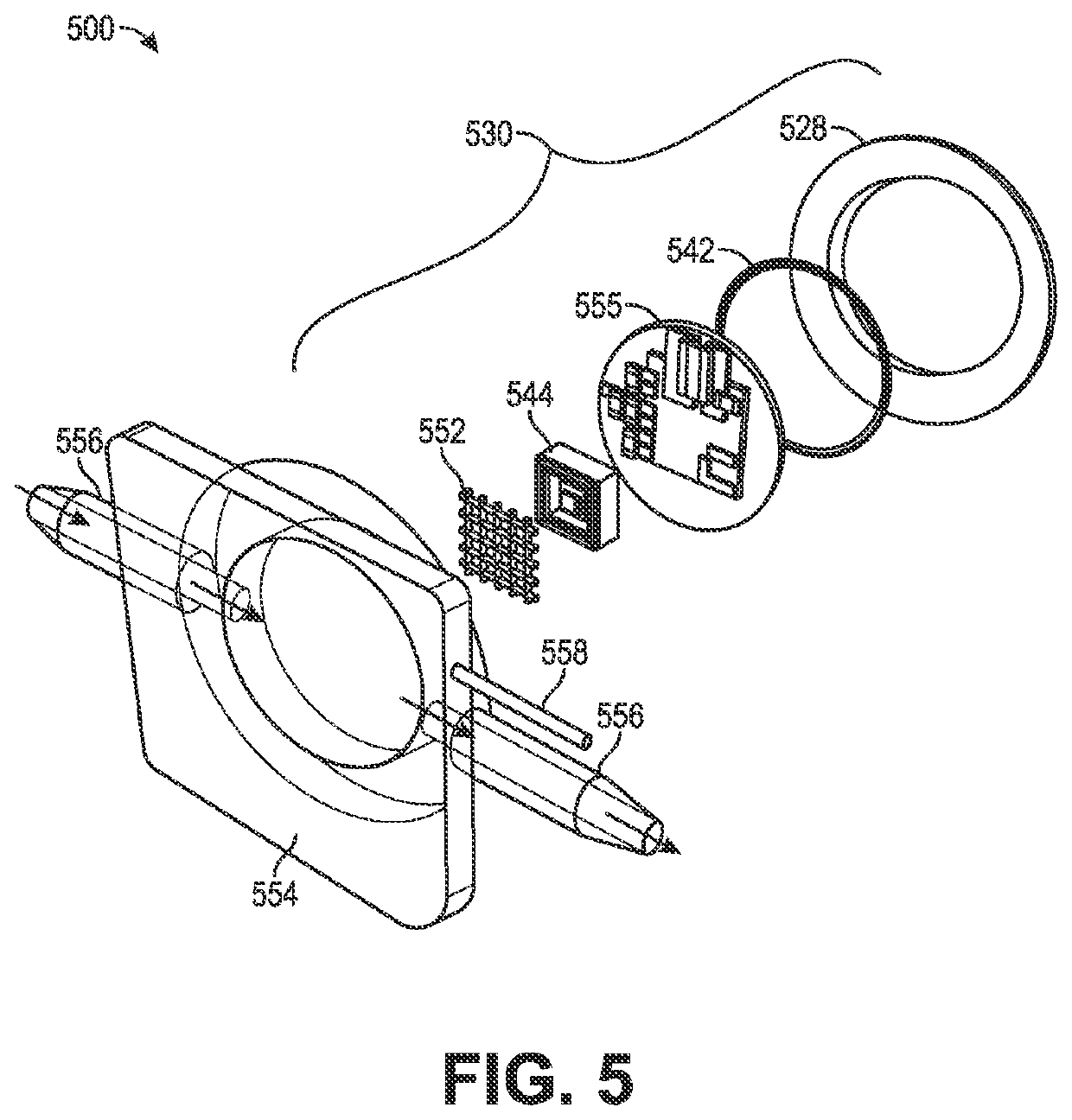Implantable Intracranial Pressure Sensor
a sensor and intracranial pressure technology, applied in the field of intracranial pressure sensing of patients, can solve the problems of increased intracranial pressure (icp) as well as neurologic and cognitive deficits, noninvasive imaging can suggest shunt failure, and risk of infection in an otherwise sterile environmen
- Summary
- Abstract
- Description
- Claims
- Application Information
AI Technical Summary
Benefits of technology
Problems solved by technology
Method used
Image
Examples
Embodiment Construction
[0044]An implantation system for long-term intracranial pressure monitoring and recording is presented. A version of the pressure sensor can fit inside a hydrocephalus drainage shunt, and the miniaturized dimensions of the sensor prevents obstruction of the shunt lumen.
[0045]In a ventricular catheter of a hydrocephalus shunt, the proximal end of the ventricular shunt is in direct contact with the brain's ventricles. The proximally located sensor allows for the direct measurement of the patient's intracranial pressure (ICP). If the proximal end of the shunt becomes blocked, the sensor will detect lower than normal ventricle pressure indicating proximal ventricle occlusion. If the distal end of the shunt becomes occluded, shunt pressure as measured by the sensor will increase indicating distal shunt occlusion.
[0046]A “ventricular catheter” includes catheters that extend into a cerebral ventricle as well as catheters that extend to the lumbar spinal canal (intrathecal), or as otherwise...
PUM
 Login to View More
Login to View More Abstract
Description
Claims
Application Information
 Login to View More
Login to View More - R&D
- Intellectual Property
- Life Sciences
- Materials
- Tech Scout
- Unparalleled Data Quality
- Higher Quality Content
- 60% Fewer Hallucinations
Browse by: Latest US Patents, China's latest patents, Technical Efficacy Thesaurus, Application Domain, Technology Topic, Popular Technical Reports.
© 2025 PatSnap. All rights reserved.Legal|Privacy policy|Modern Slavery Act Transparency Statement|Sitemap|About US| Contact US: help@patsnap.com



